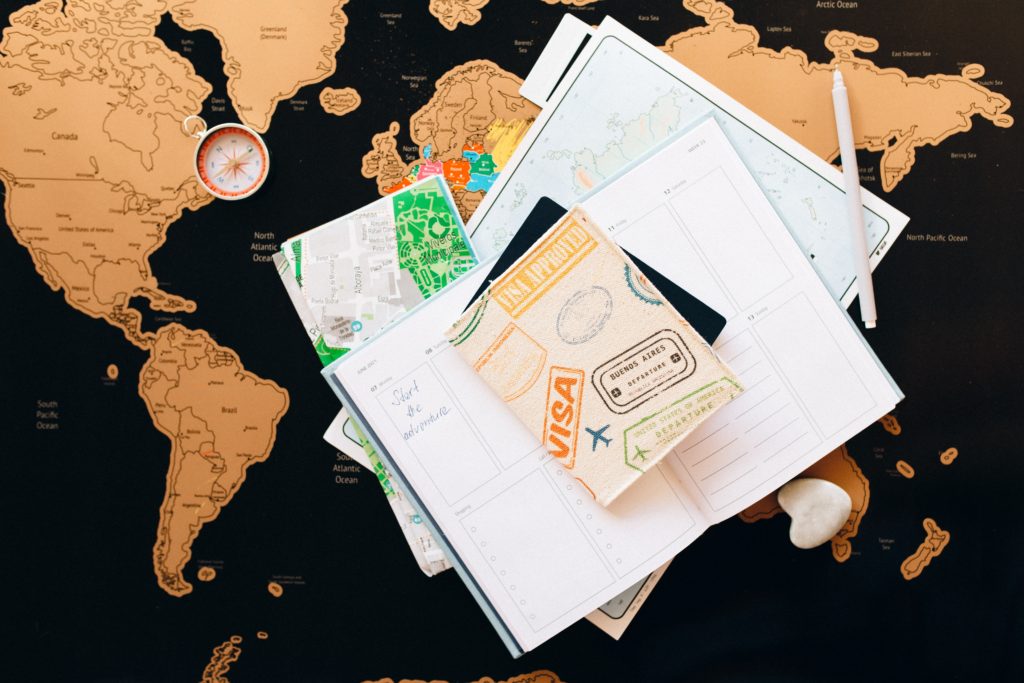
POV – School’s tuff. You’ve put in a lot of work and just need time to chill. You get an amazing idea to travel – question is where? And most importantly, how?
Being in the UK grants you access to a host of countries visa free. Unfortunately, due to Brexit, traveling within the EU isn’t as straightforward and for Schengen countries even – you’d have always needed to put in an application anyways.
Pre-Application
There are multiple types of visas and the very first step is to figure out the exact type you’d be needing. They range from transit visas, to tourism, family and friends, study, business, medical visits and medical reasons. This article will focus on the first three categories.
The next step is to verify if you’d be applying directly at the destination countries’ embassy/consulate, another Schengen state’s consulate/embassy that the specific country has authorised for visa applications or what you’ll find is the most common – a visa application centre. What’s categorised as your destination country depends on certain factors –
- If you are going to visit only one Schengen country, your destination country is that one country (haha, obviously!)
- If you are going to visit more than two Schengen countries in one trip,
- Your destination country is the country where you will spend most days if you will be spending an unequal amount of days in each
- Your destination country where you will step first, if you will be spending an equal amount of days in each
- If you are going to visit more than two Schengen countries in multiple trips, your destination country is most often the country you visit first. (I have encountered people whose individual use cases haven’t exactly matched this, so I’ll recommend directly contacting the countries’ embassy to verify as a final resort)
The Application
Here’s a quick generic guide to getting an application (transit, tourism or family/friends) in and approved. The application sometimes differs slightly depending on the country but as a rule of thumb, you’ll need the following basic requirements. Sometimes, depending on your specific situation, you may need to provide more information –
- Passport and Residence Permit – One important thing to consider is the number of months left on your passport. This is especially important if you’re a first time traveler. Most countries have a hard requirement that your passport be valid for at least 3 months from your return date. So keep that in mind.
- Application Form and photograph – Here’s a sample application form. You’ll need to fill it in accurately as mismatch of information with the evidence in your supporting documents may result in denial of your visa. Here’s a short guide to filling out the form. The Schengen visa application requires a coloured passport photograph not less than 6 months old measuring 35mm by 45 mm. You can get this professionally taken at a studio or a self service photo booth/kiosk. You will also need to provide a letter of travel purpose – addressed to the embassy and stating details about your journey. The why, The when and the how.
- Evidence of occupation and student status – You’ll need to attach a letter from your place of work stating your earned salary (a nice hack to also show evidence of sufficient funds) and confirming your role and start date (this goes to show the embassy that you’re gainfully employed and will be returning to your role). For students, you need a letter from your university outlining your student status and stating no objections to you traveling.
- Evidence of sufficient funds – You’ll need to provide bank statements clearly showing your address proving that you’re able to support yourself for the entire duration of your trip. If you’re being sponsored, a letter from your sponsor is needed detailing the support they will provide, alongside bank statements showing their capability to support.
- Tickets – You need a round trip itinerary detailing arrival and departure dates. If you’re applying for a multiple entry visa, it’s helpful to indicate the details of the entire journey to boost your application’s validity.
- Accommodation – For a family/friends visa, you’ll need to provide a letter of invitation from your host alongside their identity documents proving they have a right to residence in your destination country. Here’s a sample letter of invitation for family/friends for Norway. For a tourist visa, any form of hotel/hostel/airbnb booking would work. I use booking.com as you can decide to pay on arrival instead!
- Travel Insurance – a good company is Europ Assistance and the dates on your insurance certificate must cover the duration of your trip.
Other Helpful Tips
Once you’ve decided to travel and you’ve got your dates – before paying for your visa application, a quick hack is to verify that the appointment dates available at your VAC (Visa Application Centre) afford you enough time to –
– Get supporting documents ready
– Get the visa back in time for your trip. As a rule of thumb, I give an allowance of at least one month for tourist/family and friend visas and two months for transit visas. The earliest I’ve gotten a schengen visa back was in 1 week!
Finally, research is always helpful. Reach out to these countries’ consulates and ask all the questions you need. My general tip is to ‘over-provide’ information. Visa applications don’t exactly come cheap, so it’s best to dot all i’s and cross all t’s to ensure the embassy is very clear on your reasons to travel and doesn’t doubt your legitimacy. If you feel the consular officer will have any questions based on some unavoidable discrepancies on your application, write a letter to address it! Can’t hurt.
Once you get the visa, as I’m sure you will, check out this article for more fun ideas on how to spend your trip.
Cheers and happy traveling!
Image source – pexels.com
